Categories: Featured Articles » Sources of light
Number of views: 13642
Comments on the article: 2
What are the types of LED strips
LED strips are popular because the simplicity and ease of working with them allow you to implement many ideas. Moreover, this can be done not only quickly, but also relatively cheaply and without special knowledge. Tapes easily bend and repeat the shape of the interior or objects. They can be used as a backlight and for basic lighting. In this article we will consider what kind of LED strips are.
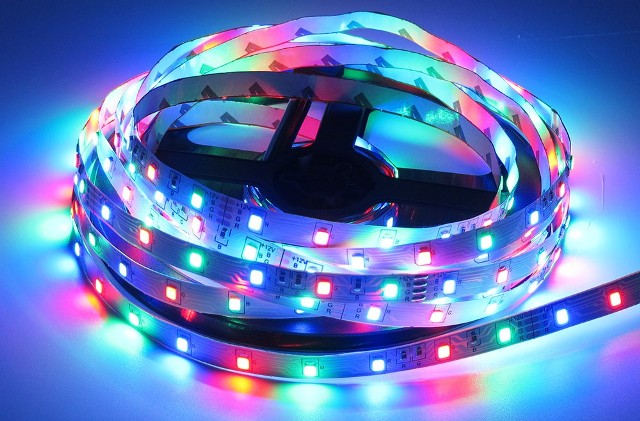
Device
LED strip is a linear light source. Structurally, it is a flexible printed circuit board on an adhesive base. Located on it LEDs. It is cut into multiple segments along the cut line, it is applied between the pads.
Important:
Do not wring the tape and do not bend it in one place - all turns should occur smoothly, and make turns at right angles with the help of special connectors. The minimum bending radius is from 2 to 5 centimeters (depending on the model).
Depending on the number of LEDs per 1 meter, the cutting length is different. For example, for a 12V LED strip, the cutting ratio depends on the number of LEDs per meter - usually 3 pieces in a section. In the figure below, 1 section is highlighted, the cut line is also visible there - it shows a strip and scissors.
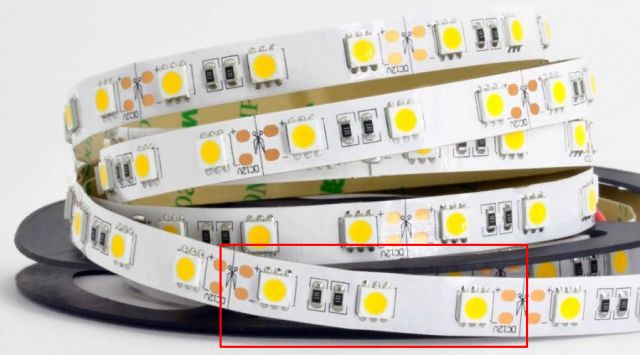
If a tape with a large number of LEDs, for example, 120 pieces per 1 meter, then they are placed in two rows. Below you see a 24V LED strip. She has 6 LEDs in one section, and in the depicted model 2 rows of 6 in one segment.
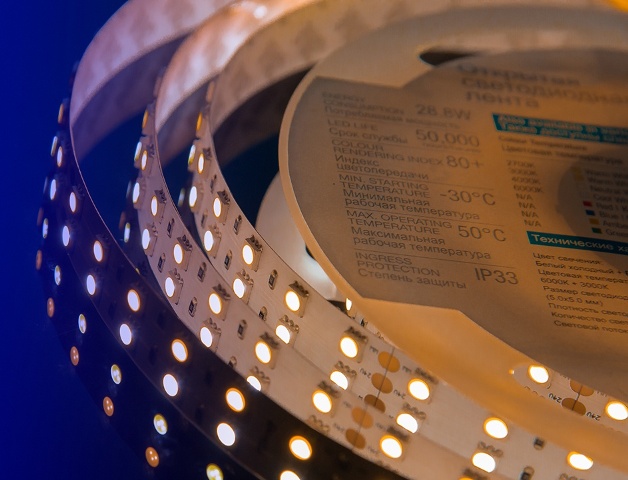
Products designed for 220 volts can also be cut, but the sections there are much longer, namely, the cut ratio is 1 meter or 60 LEDs, and models where 120 LEDs per 1 meter can be cut every 50 cm. Often there is a delivery set of 2 meters 220V tape and power adapter (this is normal diode bridge - voltage rectifier).

LED strips rated for 5 volts have a cutting ratio of 1 LED. They can be confused with USB or adapters for charging mobile phones.

But the number of LEDs in one section may vary, it depends on the connection scheme.
Classification and labeling
There are a lot of varieties of LED strips and each has its own characteristics. They differ in the type of LEDs and their number, the luminous flux and the power consumption of the product depend on this. There are also differences in supply voltage, moisture protection and other parameters.
According to the supply voltage of the tape can be divided into the following types:
-
220V
-
24V;
-
12V;
-
5B.
The most common are 220 and 12-volt types of led strips. For example, 12-volt are on:
-
30;
-
60;
-
120 pieces per 1 meter.
In the figure below you see the length of the segment for different densities of LEDs.
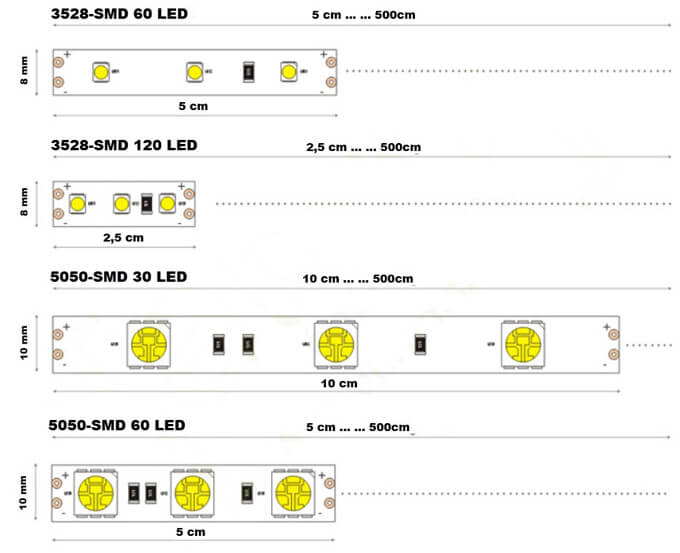
The number of LEDs in one meter depends on both the supply voltage and the design of a particular product.
But the number of LEDs per 1 meter is not the main one in terms of the effect on the emitted light flux and power consumption. The type of LEDs also affects this; they come in the following sizes:
-
3528;
-
2835;
-
5050;
-
5630;
-
5730.
In fact, there are many types of LEDs used, and on sale you can find tapes with any type of them. We considered their characteristics in the article Types, Specifications and Labeling of SMD LEDs.
The last difference inherent in all types of tapes is the dust and moisture protection class IPxx. Where instead of xx there are numbers and the larger they are, the greater moisture protection is provided to the product. Typical options:
-
IP20-23 - in fact, there is no protection, such a tape can be used in dry and non-dusty places.
-
IP65 - the most common, droplets and jets of water are allowed, which means operation on the street and in damp places.
-
IP67 - resembles a duralight cord in design; plugs are installed at the ends of the tape for its tightness. It can be used in water.May be designated as Waterproof, WP or W65.
-
IP68 - the most protected option, can also be used in water, allows illuminating pools and ponds, placing the product at the bottom. May be referred to as ExtraWaterproof, EWP or W68.

The marking looks and stands for the following.

RGB tapes
Multicolor LED Strip or RGB they are most often performed on type 5050 LEDs. They differ from other types in that there are three crystals in their case, such as those used for 3528. In the figure below, you see a comparison of white LEDs 3528 and 5050.
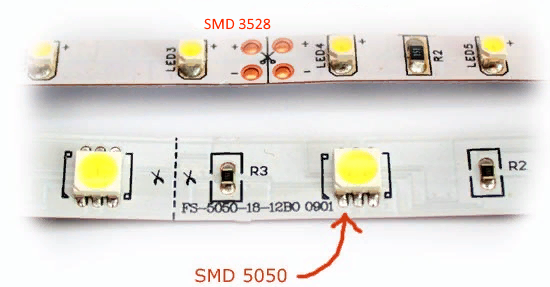
Thanks to this, it turns out to use three primary colors to form many shades: red, green and blue. The image below shows the appearance of the RGB 5050.
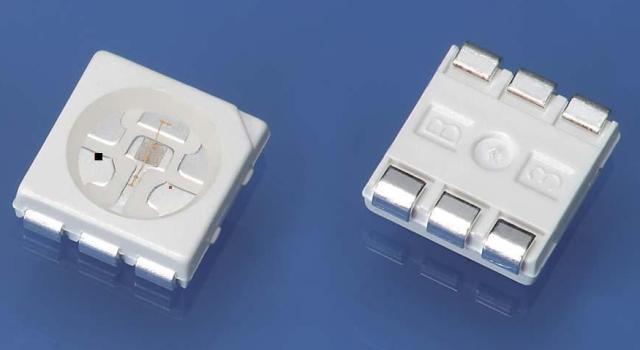
Accordingly, tapes with RGB LEDs are connected with 4 wires. The general plus and minus of each of the colors. For their work you need to use special RGB controller.
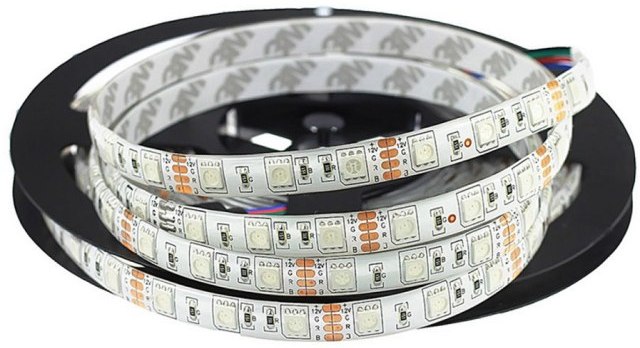
In addition to tapes with three-color LEDs, there are RGB tapes with single-color LEDs, in which case the principle of their operation is similar, the only difference is that they can be used with LEDs of a different size from 5050, which means that they also give different luminous flux indicators (brighter or vice versa dim) in them the LEDs alternate in color.
But lately, more models have appeared, they include RGBW and RGBWW, they also come in different versions. Option one - four-pin LEDs 5050 an example of such a solution you can see below, but remember in this case they already use 5 wires to connect - a common plus and minus from the red, green, blue and white channels. You also need a RGBW controller. This solution allows you to achieve a larger version of the shades of the backlight and its brightness, in particular in white.

Another option is when three contact 5050s are used, alternating alternating multi-color RGB chips and ordinary white cold or warm glow (this is visible in the photo - the color of the phosphor is different).
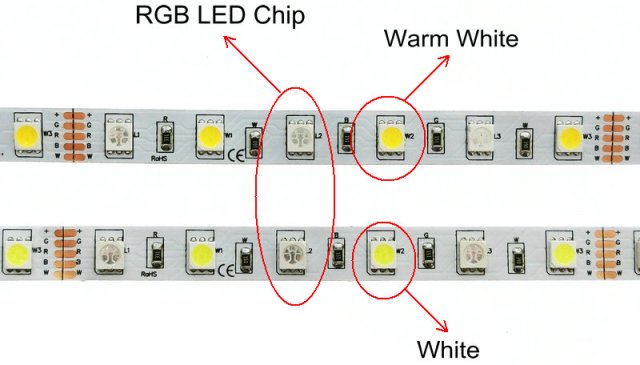
RGBWW can be decrypted as Red, Green, Blue, Warm white + white, then one LED emits neutral or cold white, and the other is warm. It also requires the following type of controllers - five-channel, in this case 6 wires are used to connect.
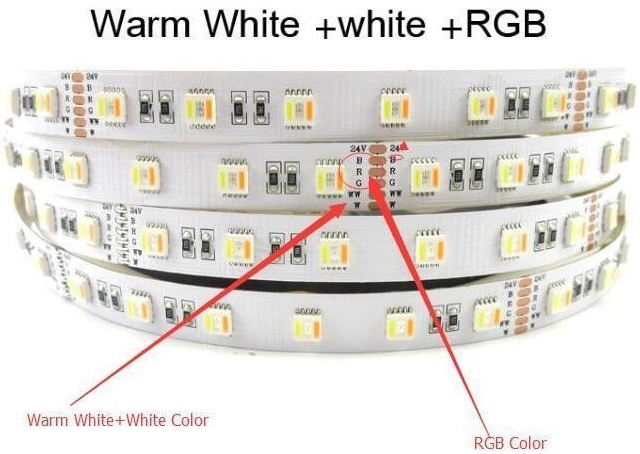
Address LED Strip
A separate type of tape that allows you to do more than just backlighting, but entire LED monitors is an addressable LED strip. Its difference is that you can control the glow color of each LED individually. It is often called a “smart led strip” or “smart led strip”.
They are produced in tapes or modules based on WS2811 chips, as shown in the figure below.
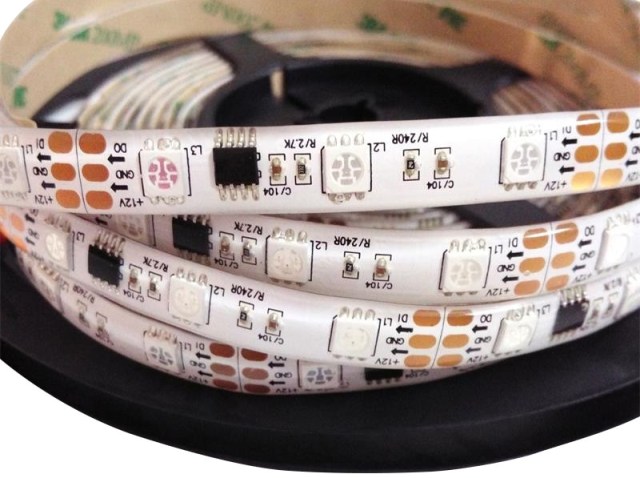
Or, on the basis of WS2812B chips, this is an LED with the above-mentioned microcircuit, but in one 5050 frame.

There is also a WS2812S model with six leads for separate power supply of the LED and the microcircuit.

On sale you can find interesting modules of various shapes, such as the ring one shown below.
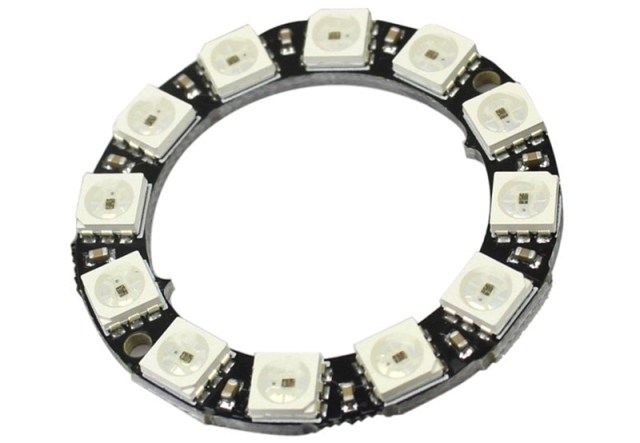
Tapes can also be cut along the line with a mark.
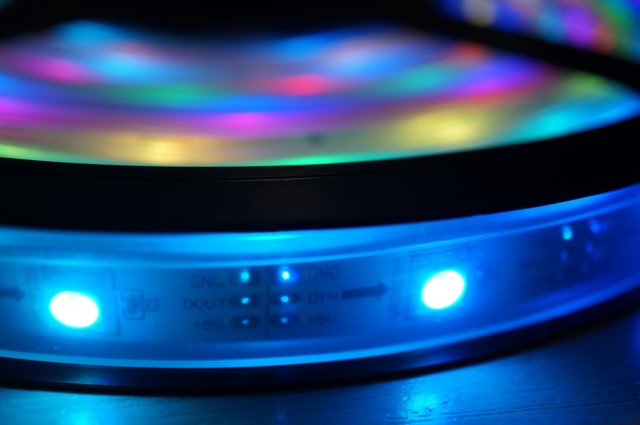
So they look "in battle":
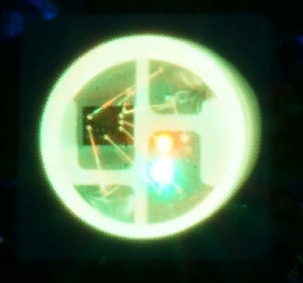
Interesting:
There are 5mm output LEDs compatible with the previous ones according to the protocol, their marking is PL9823.
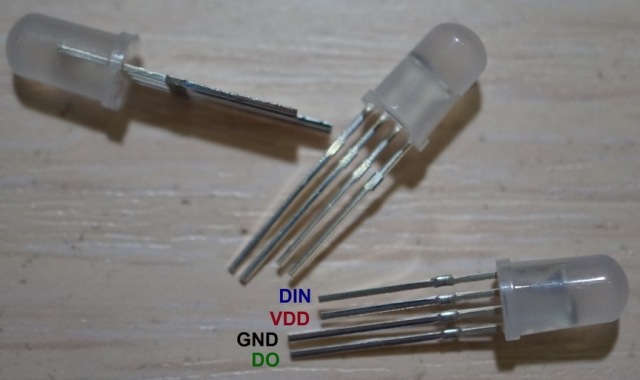
To see how such a device can work, watch the video:
The peculiarity of the device is that you transfer to the DIN input a pack of 24 bits, 8 bits per value for PWM control each of the colors - after which a signal is given, they are transmitted to DO (DOUT), which is connected to the next LED. It turns out something like a shift register and sequential data input. In this case, the PWM operates at a frequency of 400 Hz, which is invisible to the eye, but still noticeable when shooting video.
It is worth noting that here the data transfer occurs on a single wire, therefore, it is impossible to organize classic packets of ones and zeros. Therefore, the pulse length determines whether the chip will accept - zero or one.
This is discussed in more detail in the video:
Nuance: Colors go in the order of “green-red-blue”, and not as usual “red-green-blue”.
The disadvantage is that if one of the LEDs lights up, then those that are located in the circuit after it also stop glowing, since the data will not be transferred further.
Therefore (and maybe for other reasons) the following modification was developed - these are WS2813 chips, they also have six outputs.

Attentive people could notice that “BIN” appeared. It connects to the DIN of the previous LED, so when a burnt pixel (LED in the tape or matrix) appears, the data is transferred in any case, this issue is discussed in more detail in this video.
There are controllers for such tapes. With their help, you can control the glow of LEDs from a smartphone.
No less interesting is the controller model on the ESP8266 board, which we talked about in this article -Microcontroller Remote Control Methods.
Conclusion
We examined the main types of LED strips. If you are interested in the last example - the address tape - write about it in the comments and we will certainly prepare an article for you!
See also at bgv.electricianexp.com
:
